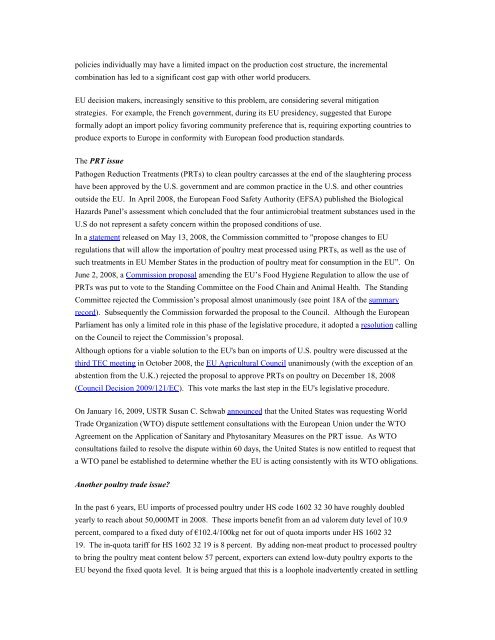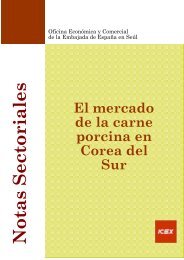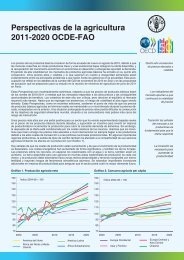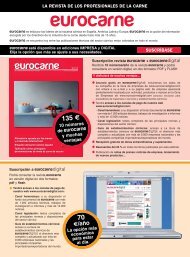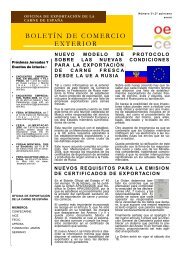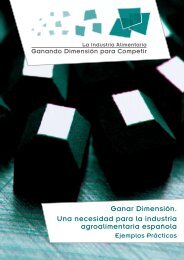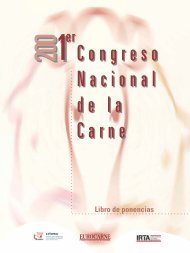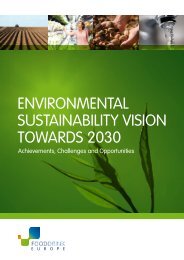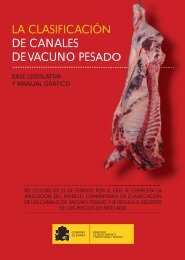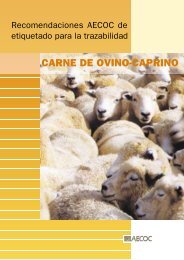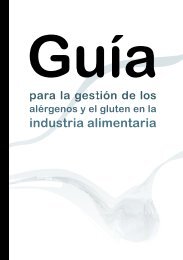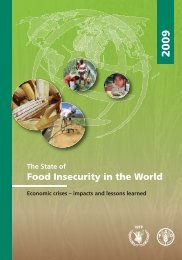France EU27 EU-27 POULTRY AND PRODUCTS ... - Eurocarne
France EU27 EU-27 POULTRY AND PRODUCTS ... - Eurocarne
France EU27 EU-27 POULTRY AND PRODUCTS ... - Eurocarne
- No tags were found...
Create successful ePaper yourself
Turn your PDF publications into a flip-book with our unique Google optimized e-Paper software.
policies individually may have a limited impact on the production cost structure, the incrementalcombination has led to a significant cost gap with other world producers.<strong>EU</strong> decision makers, increasingly sensitive to this problem, are considering several mitigationstrategies. For example, the French government, during its <strong>EU</strong> presidency, suggested that Europeformally adopt an import policy favoring community preference that is, requiring exporting countries toproduce exports to Europe in conformity with European food production standards.The PRT issuePathogen Reduction Treatments (PRTs) to clean poultry carcasses at the end of the slaughtering processhave been approved by the U.S. government and are common practice in the U.S. and other countriesoutside the <strong>EU</strong>. In April 2008, the European Food Safety Authority (EFSA) published the BiologicalHazards Panel’s assessment which concluded that the four antimicrobial treatment substances used in theU.S do not represent a safety concern within the proposed conditions of use.In a statement released on May 13, 2008, the Commission committed to "propose changes to <strong>EU</strong>regulations that will allow the importation of poultry meat processed using PRTs, as well as the use ofsuch treatments in <strong>EU</strong> Member States in the production of poultry meat for consumption in the <strong>EU</strong>”. OnJune 2, 2008, a Commission proposal amending the <strong>EU</strong>’s Food Hygiene Regulation to allow the use ofPRTs was put to vote to the Standing Committee on the Food Chain and Animal Health. The StandingCommittee rejected the Commission’s proposal almost unanimously (see point 18A of the summaryrecord). Subsequently the Commission forwarded the proposal to the Council. Although the EuropeanParliament has only a limited role in this phase of the legislative procedure, it adopted a resolution callingon the Council to reject the Commission’s proposal.Although options for a viable solution to the <strong>EU</strong>'s ban on imports of U.S. poultry were discussed at thethird TEC meeting in October 2008, the <strong>EU</strong> Agricultural Council unanimously (with the exception of anabstention from the U.K.) rejected the proposal to approve PRTs on poultry on December 18, 2008(Council Decision 2009/121/EC). This vote marks the last step in the <strong>EU</strong>'s legislative procedure.On January 16, 2009, USTR Susan C. Schwab announced that the United States was requesting WorldTrade Organization (WTO) dispute settlement consultations with the European Union under the WTOAgreement on the Application of Sanitary and Phytosanitary Measures on the PRT issue. As WTOconsultations failed to resolve the dispute within 60 days, the United States is now entitled to request thata WTO panel be established to determine whether the <strong>EU</strong> is acting consistently with its WTO obligations.Another poultry trade issue?In the past 6 years, <strong>EU</strong> imports of processed poultry under HS code 1602 32 30 have roughly doubledyearly to reach about 50,000MT in 2008. These imports benefit from an ad valorem duty level of 10.9percent, compared to a fixed duty of €102.4/100kg net for out of quota imports under HS 1602 3219. The in-quota tariff for HS 1602 32 19 is 8 percent. By adding non-meat product to processed poultryto bring the poultry meat content below 57 percent, exporters can extend low-duty poultry exports to the<strong>EU</strong> beyond the fixed quota level. It is being argued that this is a loophole inadvertently created in settling


